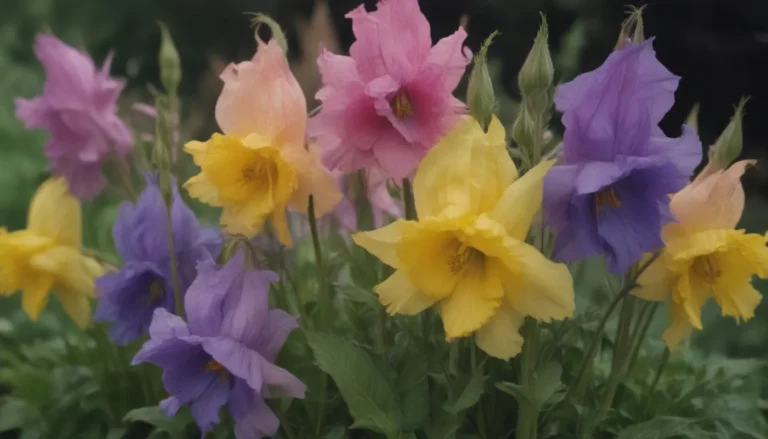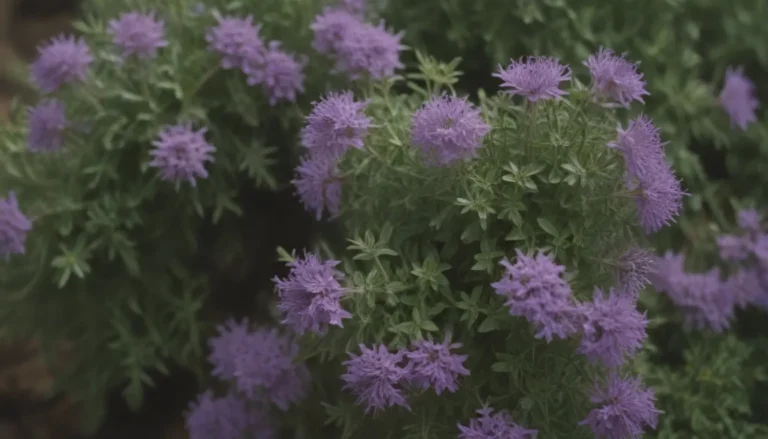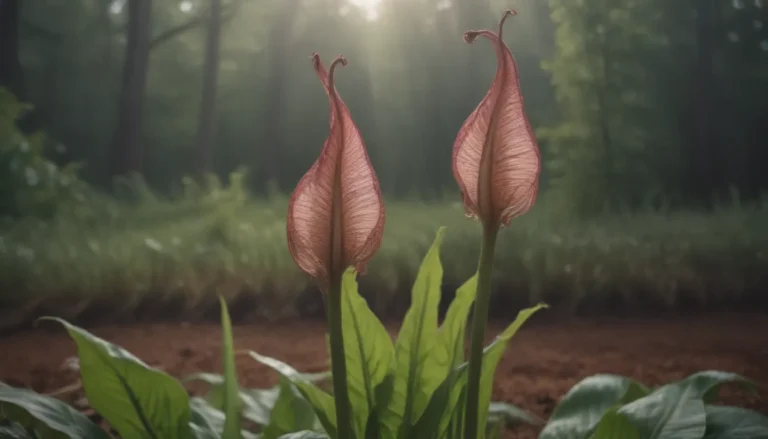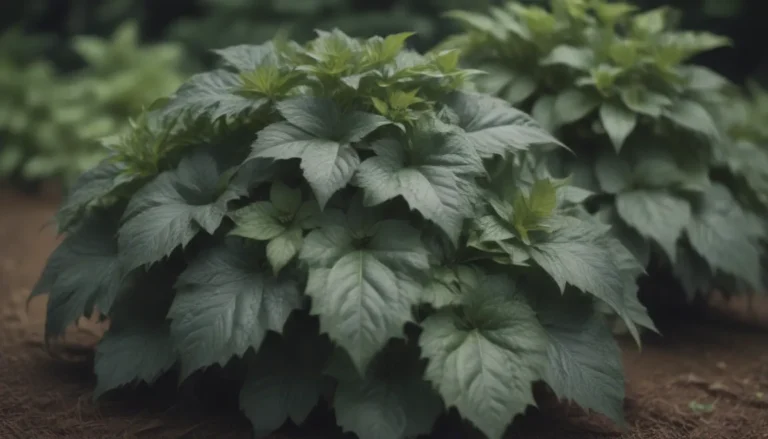A Comprehensive Guide on Growing and Caring for Thai Pepper Plants
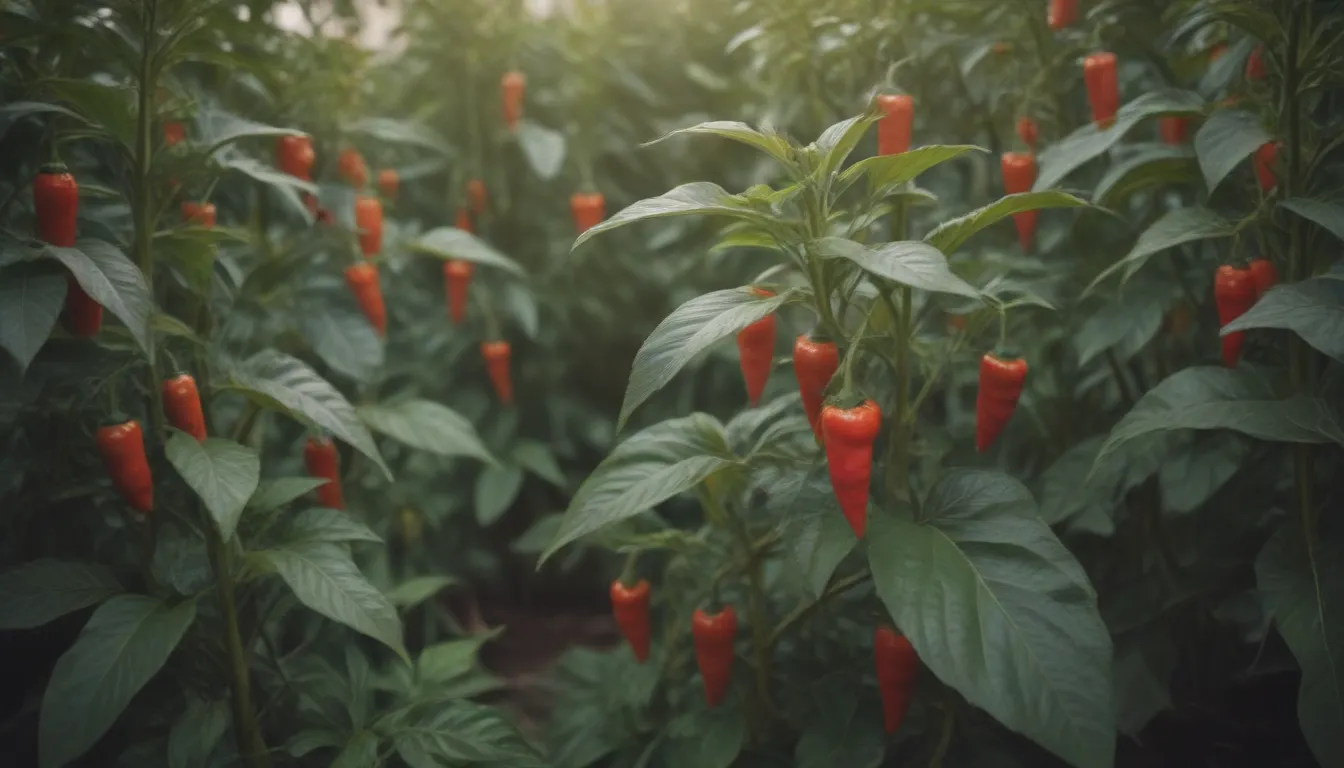
Are you a fan of chili peppers but looking for a unique twist on the traditional heat? If so, you might want to consider growing Thai pepper plants (Capsicum annuum ‘Bird’s Eye’). These peppers boast thick-walled fruits that range from 1 to 2 inches in length, packed full of seeds. As they ripen from green to red, they reach a Scoville rating of 50,000 to 100,000, offering a sweet yet fiery flavor similar to a red bell pepper with a kick that’s milder than a habanero.
In addition to their delicious flavor, Thai pepper plants are compact, reaching only about 1 foot in height, making them perfect for growing in containers. Some varieties of these plants are even sold as ornamentals, adding both beauty and flavor to your garden. With a growing season of 100 to 130 days, Thai pepper plants thrive in hot and humid conditions, producing bountiful crops when given the right care.
Warning: Handling Thai Pepper Plants
While the exterior of Thai pepper plants is safe to touch, the seeds and veins inside can cause a burning sensation on the skin. To avoid any discomfort, it is highly recommended to wear gloves when working with these hot chili peppers.
How to Plant Thai Pepper Plants
To successfully grow and harvest Thai peppers, you need to provide them with specific growing conditions. Here’s how to get started:
When to Plant
- Gardeners in hardiness zones 9 to 11 can sow Thai pepper seeds directly into the ground once the soil has warmed to 60 degrees F.
- For those in other zones, start seeds indoors 8 to 10 weeks before the final frost date to ensure a head start on the growing season.
Selecting a Planting Site
- Choose a sunny spot that receives at least 6 to 8 hours of sunlight daily.
- Ensure the soil is rich and well-draining by amending it with compost or other organic materials.
- Avoid planting in areas where nightshade plants were grown in the previous year.
Spacing, Depth, and Support
- Transplant seedlings 1 to 2 feet apart in rows spaced 2 to 3 feet apart.
- Plant seedlings at the same depth as in their current container, or slightly lower, and remove the seed leaves.
- In raised beds, seedlings can be planted 14 to 16 inches apart, and mature Thai pepper plants typically do not require support.
Thai Pepper Plant Care
Light
- Thai pepper plants thrive in hot sun and require a minimum of 6 hours of direct sunlight daily.
- Avoid planting near taller plants that may shade the peppers and inhibit their growth.
Soil
- These plants prefer rich, well-draining soil with a slightly acidic to balanced pH ranging from 5.5 to 7.0.
- Work in aged compost or manure before planting to provide essential nutrients for healthy growth.
Water
- Water Thai pepper plants deeply every two to three days to keep the soil consistently moist.
- Be cautious of overwatering when the fruits are still immature, but do not allow the soil to dry out completely.
- Consider using drip irrigation to ensure your plants receive adequate water without becoming waterlogged.
Temperature and Humidity
- Thai pepper plants thrive in temperatures between 70 to 85 degrees F during the day and 60 to 70 degrees F at night.
- Maintain humidity levels of 50 to 60 percent to support plant growth, especially in hot and dry conditions.
Fertilizer
- Use a fertilizer with an NPK ratio of 5-10-10 one month after planting, and again when fruits start to set, ensuring it contains calcium.
- Avoid nitrogen-rich fertilizers once the plants are established to prevent inhibiting fruit production.
- Consider using tomato fertilizers, which work well for pepper plants.
Pollination
- Although Thai pepper plants are self-pollinating, they still benefit from the presence of pollinators like bees to ensure optimal fruit production.
- If you notice a lack of fruit development despite abundant flowers, consider planting pollinator-attracting flowers nearby.
Types of Thai Pepper Plants
Thai pepper plants encompass a variety of pepper types, each offering a unique flavor profile and heat level. Here are a few notable varieties:
- Serrano (Capsicum annuum)
- Tabasco (Capsicum frutescens)
- Korean (Capsicum annuum)
- Cayenne (Capsicum annuum)
Thai Pepper vs. Tabasco
While Thai pepper and Tabasco pepper plants share similarities in heat levels, they differ in taste and flavor. Tabasco peppers offer a greener, celery-like taste, while Thai peppers are sweeter with a hint of red bell pepper. Tabasco peppers also have a shorter ripening period, maturing in about 80 days compared to Thai peppers’ 100 to 130 days.
Harvesting Thai Peppers
Whether you prefer green or red peppers, Thai peppers can be harvested at both stages. For green peppers, wait until they reach full size before picking, as they will have lower heat levels compared to ripe red peppers. Use sharp scissors to cut the peppers from the plant, leaving the stems intact to prolong their freshness. Additionally, allow harvested green peppers to ripen indoors for about two weeks.
Tip: Be sure to check on ripening peppers periodically to remove any overripe or spoiled ones, allowing the remaining peppers to continue maturing.
Growing Thai Pepper Plants in Pots
Thai pepper plants are ideal for container gardening due to their compact size and attractive fruits. Here’s a guide on how to grow Thai peppers in pots:
- Select a 15-inch pot with proper drainage and fill it with a high-quality potting mix enriched with perlite, moss, or coconut coir for moisture retention.
- Plant the seedling in the center of the pot at the same level or slightly deeper than in its seedling container, and water thoroughly.
- Place the pot in a sunny location where it receives full sunlight daily, and water the plant twice a day as needed.
- Fertilize every 4 to 6 weeks with an organic liquid fertilizer once the fruits begin to form to support healthy growth.
Growing Thai Pepper from Seed
Starting Thai pepper seeds indoors allows for a longer growing season and better control over the plants’ environment. Here’s how you can grow Thai peppers from seeds:
- Begin planting seeds indoors 8 to 10 weeks before the final frost date using seed starting mix and containers.
- Consider using a germination tray or small pots to sow the seeds, ensuring they receive ample light and warmth to encourage sprouting.
- As the seeds germinate and grow, transplant the seedlings into larger containers or directly into the garden once the weather warms up.
Companion Plants for Thai Pepper
Thai pepper plants thrive when planted alongside certain companion plants. Consider pairing them with nasturtium, marigold, petunia, chive, oregano, dill, basil, or parsley to promote healthy growth and discourage pests.
Common Pests and Plant Diseases
Like any plant, Thai pepper plants are susceptible to pests and diseases that can affect their growth and productivity. Here are some common issues to watch out for:
- Sap-sucking insects such as aphids and spider mites can damage Thai pepper plants, requiring intervention with insecticidal soap or a strong water spray.
- The pepper weevil is a significant pest that can cause damage to the plant by laying eggs in flowers and developing peppers. Vigilance and proper sanitation practices can help prevent infestations.
- Fungal, bacterial, and viral diseases like verticillium wilt, bacterial leaf spot, and powdery mildew can also impact Thai pepper plants. Use disease-resistant seeds and maintain optimal growing conditions to reduce the risk of these issues.
By following these tips and guidelines, you can successfully grow and care for Thai pepper plants, enjoying a bountiful harvest of flavorful and fiery peppers. Whether you’re a seasoned gardener or a novice pepper enthusiast, cultivating Thai peppers can be a rewarding experience that adds a spicy kick to your culinary creations.
Remember, patience is key when growing Thai peppers, as they require time and attention to reach their full potential. With the right care and maintenance, you can enjoy a thriving Thai pepper plant that yields flavorful and spicy peppers for months to come. So, roll up your sleeves, put on your gardening gloves, and get ready to embark on a flavorful journey with Thai pepper plants!


